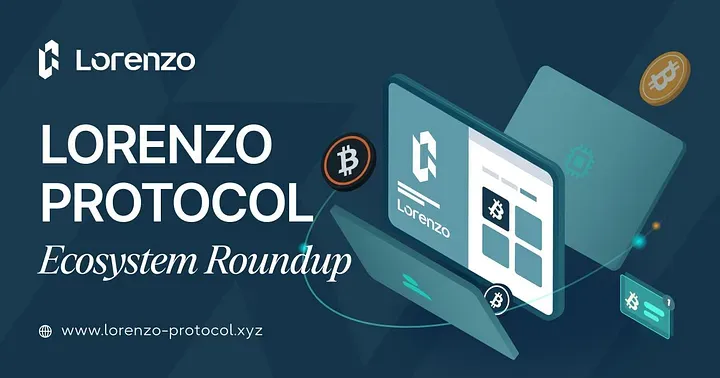News
Stay up-to-date on the most trending topics in crypto with our professional and in-depth news.

The Senate’s investigation into President Trump's cryptocurrency projects, including the TRUMP meme coin and WLFI, explores potential ethical violations, foreign influence, and insider trading.


The Sui ecosystem has performed exceptionally well over the past six months, driven by a positive flywheel effect built on DeFi incentives, ecosystem partnerships, and support for high-quality projects. This cycle — subsidizing staking participation, boosting TVL and liquidity, empowering new projects with exposure and expanding its user base — has propelled Sui to the forefront. Currently, the market is speculating on a potential SUI ETF launch and anticipating another TVL milestone for the ecosystem. Recently launched Sui-based tokens, such as DEEP and WAL, have already been listed on Korea's leading exchange Upbit, demonstrating the strong backing and resources of the Sui Foundation. Additionally, an upcoming token unlock worth over $250 million has drawn further market attention. While large unlocks can trigger price concerns, as seen with Solana, SOL remains resilient, and many investors are optimistic about SUI's long-term price action. A post-unlock pullback could present an attractive entry point.




In 2025, the stablecoin market shows strong signs of growth. Research indicates that the market cap of USD-pegged stablecoins has surged 46% year-over-year, with total trading volume reaching $27.6 trillion, surpassing the combined volume of Visa and Mastercard transactions in 2024. The average circulating supply is also up 28% from the previous year, reflecting sustained market demand. Once used primarily for crypto trading and DeFi collateral, stablecoins are now expanding into cross-border payments and real-world asset management, reinforcing their growing importance in the global financial system. More banks and enterprises are starting to issue their own stablecoins. Standard Chartered launched an HKD-backed stablecoin, and PayPal issued PYUSD. The CEO of Bank of America has expressed interest in launching a stablecoin once regulations permit (via CNBC). Fidelity is developing its own USD stablecoin, while JPMorgan Chase and Bank of America plan to follow suit when market conditions stabilize. Meanwhile, World Liberty Financial (backed by the Trump family) has introduced USD1, backed by assets such as government bonds and cash.



- 12:18Analysis: Suggest Holding Cryptocurrencies in May, Trump's Policies May Catalyze the Summer Crypto MarketThe analysis firm K33 Research stated that the cryptocurrency market in the summer of 2025 might differ from previous years, mainly influenced by several policies driven by former U.S. President Trump. Trump had previously signed executive orders to establish strategic Bitcoin and digital asset reserves, aiming to position the U.S. as a global leader in cryptocurrency. These strategic reserves are primarily composed of Bitcoin confiscated by the Treasury, which is expected not to be sold but held as national reserve assets for the long term. Although the initial market reaction was tepid, with Bitcoin prices remaining between $77,000 and $87,000 for most of April, analysts believe this policy could drive institutional investor participation in the long term, creating a "flywheel effect" to accelerate industry growth. They also suggest that investors hold their positions in May, waiting for the policy effects to gradually manifest.Vetle Lunde, Head of Research at K33, and Senior Analyst David Zimmerman noted in a report released on Tuesday: "There is almost no completely satisfactory explanation for the seasonality of returns we observe, but holiday effects and tax deadlines may be key factors affecting performance. Additionally, summer catalysts are usually fewer than at other times of the year. Currently, Trump's actions have influenced the overall market trend, affecting risk tolerance and distorting future expectations. Cryptocurrencies will face several favorable factors driven by Trump in the future, while the stock market may again face tariff impacts—these will lay the foundation for Bitcoin's relative strength in the coming months." (The Block)
- 12:17Visa's Strategic Investment in Blockchain Payment Company BVNKThe venture capital arm of global payment service provider Visa (V) has made a strategic investment in the startup BVNK, which is building a payment infrastructure based on stablecoins. This move reflects the trend of traditional financial companies venturing into blockchain-driven currency flows. A BVNK spokesperson confirmed the completion of the deal in an email but declined to disclose the investment amount. BVNK's software allows businesses to send and receive stablecoins in global markets. The London-based company stated that its annualized stablecoin transaction volume has reached $12 billion and has recently entered the U.S. market, with offices in New York and San Francisco. The company has applied for licenses in all U.S. states and has received approval in several states.
- 11:00Shardeum Public Chain Project White Paper: SHM Token Cap Set at 508 Million, 51% Allocated to the CommunityThe EVM-based Layer1 blockchain Shardeum has released its white paper, detailing its tokenomics model. The white paper emphasizes that the total supply of Shardeum's tokens (SHM) will not exceed 508 million and will not be altered by any form of future voting. Additionally, all transaction fees will be burned and not paid to any miners or validator nodes. The details of SHM token distribution are as follows: Community: 51% of the total supply (approximately 259,080,000 SHM) as rewards for validator and archive nodes. Sales: 18% of the total supply (approximately 91,440,000 SHM), with a 2-year daily linear unlock after a 3-month cliff following the initial sale. Team: 15% of the total supply (approximately 76,200,000 SHM), also with a 2-year daily linear unlock after a 3-month cliff. Foundation: 11% of the total supply (approximately 55,880,000 SHM), unlocked at the token generation event (TGE). Ecosystem: 5% of the total supply (approximately 25,400,000 SHM), unlocked at TGE. It is reported that Shardeum was co-founded by Nischal Shetty, who also founded the large Indian cryptocurrency exchange WazirX. The company completed an $18.2 million seed round last October and a $5.4 million strategic funding round this July.